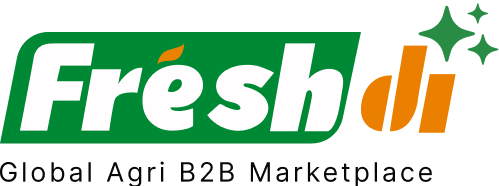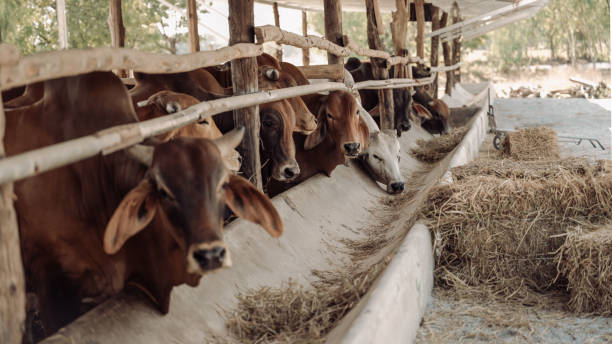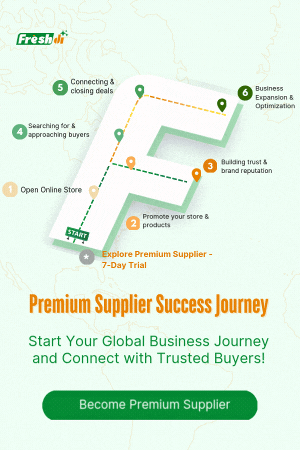Introduction – Current State of Play: The Animal Cattle Feed Sector in Brazil
In 2025, Brazil’s animal cattle feed market is undergoing some serious shakeups. If you’re in the business of sourcing or supplying cattle feed, it’s crucial to stay on your toes. Why? Because the landscape is shifting fast—thanks to a mix of trade deals, weather events, supply bottlenecks, and booming exports.
Let’s start with the headline news: In May 2025, Brazil sealed a game-changing deal with China, allowing the export of distillers dried grains (DDGs)—a prized cattle feed ingredient. This move could undercut the U.S.’s grip on Chinese DDG imports and catapult Brazil into a stronger position in the global feed market.
And that’s not the only big win. The EU-Mercosur trade agreement, finalized recently, opens Europe’s doors wider to Brazilian beef. More beef exports mean more cattle, and that means more feed. But here’s the twist—Brazil’s cattle herd is expected to shrink by over 9% in 2026 due to decreased profitability and increased cow slaughter. That’s a red flag for feed producers and buyers alike.
On top of all that, feedlot usage is holding steady—about 7 million head of cattle went through feedlots in 2023. It’s clear that feedlots are now a key part of Brazil’s beef production puzzle.
Then there’s the corn situation. Prices spiked earlier this year, pushing up feed costs—though there’s been a recent dip thanks to expected record harvests. Still, volatility is the name of the game, and businesses feeding cattle can’t afford to ignore it.
Add in environmental fines, sustainability pressures, and rising export demand, and you’ve got a market defined by both opportunity and risk.
Bottom line? Whether you’re a buyer, supplier, or investor—2025 is the year to watch Brazil’s cattle feed industry closely.
Deep Dive – Market Movers: Recent Developments and Consequences
The last 12 months have been a rollercoaster for Brazil’s animal cattle feed market. Let’s unpack the key developments shaping things right now.
First, the China-Brazil DDG export agreement is a major win. DDGs, a by-product of ethanol production, are nutrient-rich and widely used in cattle feed. With China opening its doors, Brazilian producers now have access to one of the largest feed markets in the world. This boosts Brazil’s position and offers diversification from traditional corn-based feeds.
Meanwhile, the EU-Mercosur deal is a big driver for beef production. As Brazilian beef exports to Europe ramp up, the need for efficient fattening—often done in feedlots—becomes more critical. This means more demand for high-quality, consistent feed.
However, shrinking cattle herds could temper feed demand growth. JBS and other major players are already adapting by partnering with ranchers to ensure steady supply. It’s a strategic pivot—keeping processing plants running while feed volumes fluctuate.
On the cost side, corn price spikes driven by low inventories and high demand from ethanol plants sent shockwaves through the feed market. Prices crossed 90 reais per 60-kg bag earlier this year—the highest in three years. But recent projections of a record grain harvest have helped ease some of that pressure, offering a temporary reprieve to feedlot operators.
Environmental concerns are also shaping practices. In early 2025, Brazil’s environmental agency slapped fines on 23 meatpackers, including JBS, for sourcing cattle from deforested Amazon land. That kind of regulatory heat is forcing feed and meat producers alike to tighten traceability and adopt more sustainable sourcing strategies.
Top 3 Verified Animal Cattle Feed Suppliers in Brazil – Relevant in the Current Climate
Freshdi, a leading B2B platform for agri-trade, has verified several top-performing cattle feed suppliers in Brazil. Based on export capacity, certifications, logistics readiness, and platform user feedback, here are the Top 3 Animal Cattle Feed Suppliers in Brazil in Year 2025:
1. A Botija – Mineracao E Comercio Ltda
A Botija stands out for its diversified product offerings and strong logistics network. Known for consistent quality and timely deliveries, they serve both domestic and international markets with a focus on mineral-enriched cattle feed products. Their recent traction on Freshdi suggests a rising demand for their specialized formulas.
2. Janerson Ferreira
Janerson Ferreira has gained attention for offering competitively priced, sustainable cattle feed options. With a footprint in both local and export markets, they’ve become a go-to for buyers seeking feed that aligns with environmental compliance standards. Their positive supplier verification score on Freshdi highlights reliability.
3. HX Foods
HX Foods is a newer player with a growing reputation. Their emphasis on grain-based cattle feed, including corn and DDG blends, has made them especially relevant in the current climate. With China’s approval of Brazilian DDGs, suppliers like HX Foods stand to benefit significantly.
Dynamic Ranking Note:
Freshdi’s platform features dynamic supplier rankings such as “Suppliers of the Month” or “Top Exporters of the Quarter,” which reflect real-time performance metrics, RFQ responsiveness, and trade volumes. These rankings help buyers quickly identify high-performing partners in a fast-changing market.
Market Navigation – Strategic Responses to The Current Animal Cattle Feed Landscape in Brazil
So, what does all this mean for you as a buyer or business stakeholder?
First, flexibility is key. With feed costs swinging due to corn price volatility, it’s smart to diversify your sourcing. Don’t rely on just one type of feed ingredient—look into DDGs, wheat feed, or even alternative protein sources when corn prices spike.
Second, traceability matters more than ever. With regulators cracking down on illegal deforestation, working with verified suppliers is non-negotiable. Platforms like Freshdi can help you vet suppliers based on compliance history and sustainability practices.
Third, timing is everything. If you’re planning to secure feed for Q3 or Q4 of 2025, now’s the time to lock in contracts. Global demand is climbing, and competition for high-quality Brazilian feed will only intensify.
Also, pay attention to regional dynamics. Feed producers in Brazil’s Midwest, where grain harvests are expected to be strong, may offer better pricing and availability. On the flip side, southern regions hit by erratic weather might face supply disruptions.
Lastly, stay plugged into trade news. With China and the EU turning into major buyers of Brazilian agri-products, expect logistics bottlenecks at ports and increased internal competition for feedstock.
Conclusion – Key Takeaways for Businesses in a Dynamic Market
2025 is not the year to take a “business as usual” approach in Brazil’s cattle feed market. From trade deals with China to shifting environmental regulations and volatile corn prices, the playing field is changing fast.
Here’s what you should do:
- Stay informed. Monitor trade policies, weather trends, and regulatory shifts.
- Vet suppliers thoroughly. Use platforms like Freshdi to check certifications, export capabilities, and sustainability credentials.
- Diversify your feed sources. Don’t put all your eggs (or cows) in one basket—explore DDGs, wheat feed, and other alternatives.
- Lock in contracts early. Secure volumes ahead of peak demand spikes and price hikes.
- Go digital. Use B2B platforms to streamline sourcing, receive RFQ alerts, and track market shifts in real time.
Checklist for Buyers: 2025 Cattle Feed Sourcing in Brazil
- ✅ Review supplier credentials and sustainability metrics on Freshdi
- ✅ Compare feed input costs (corn, DDGs, wheat) and adjust purchase plans
- ✅ Monitor weather forecasts and regional harvest predictions
- ✅ Align feed sourcing with beef export schedules to anticipate demand
- ✅ Set up notifications for RFQ trends and supplier promotions on Freshdi
Future Outlook: What’s Next for Brazil’s Cattle Feed Market?
Looking ahead, the Brazilian cattle feed sector will likely see:
- Continued expansion into Asian markets, especially China.
- A greater emphasis on traceable and deforestation-free supply chains.
- Tech integration in feed production and delivery logistics.
- Heightened competition for grain inputs, spurred by ethanol demand and climate conditions.
In short, agility and insight will be your best friends in navigating this market.
How Freshdi Empowers Buyers in 2025
Freshdi isn’t just a B2B marketplace—it’s your strategic ally. Whether you’re looking for real-time RFQ trends, supplier verification, or updates on market shifts, Freshdi gives you the tools to:
- Discover high-performing, compliant cattle feed suppliers
- Access up-to-date trade and price insights
- Receive real-time alerts on RFQ changes tied to global news
- Manage procurement efficiently in a volatile environment
FAQs
1. What are DDGs, and why are they important in Brazil’s cattle feed market?
DDGs, or distillers dried grains, are a by-product of ethanol production. They’re rich in protein and energy, making them ideal for cattle feed. With China now importing Brazilian DDGs, demand is expected to rise.
2. How can I verify if a supplier follows sustainable practices?
Platforms like Freshdi provide supplier profiles with compliance history, certifications, and user feedback. Look for transparency in sourcing and environmental credentials.
3. Why are corn prices so volatile in Brazil right now?
Corn prices are influenced by low stock levels, strong demand from ethanol and meat industries, and unpredictable weather patterns. These factors create frequent price swings.
4. What’s the impact of the EU-Mercosur agreement on cattle feed?
The trade deal boosts beef exports to Europe, increasing cattle production and, by extension, cattle feed demand—especially for feedlot finishing systems.
5. How can Freshdi help me manage procurement risks?
Freshdi offers dynamic supplier rankings, market insights, and RFQ alerts to help you make timely, informed decisions in a fast-changing market.
References
- Reuters: China to allow Brazil’s ethanol by-product
- Reuters: Brazil faces inflation risks from corn prices
- Le Monde: JBS to benefit from EU-Mercosur trade deal
- Food Business MEA: JBS prepares for lower cattle supply
- TradingView: Brazil feedlot utilization stats
- World Beef Report: Feed cost trends
- AP News: Environmental fines and sustainability
- WLJ: Brazil’s beef export growth


